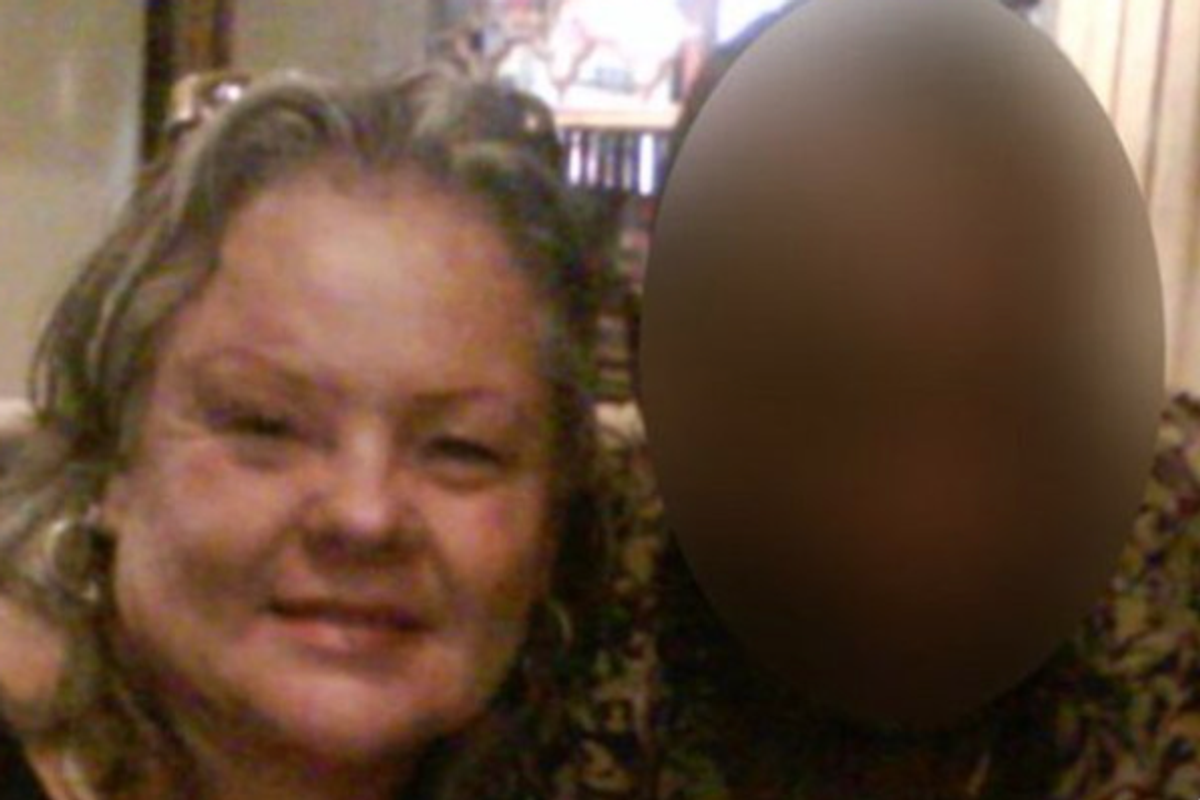A woman flew to Nigeria to directly confront her internet scammer. And now, they're friends.

The relationship that has developed between artist Maria Grette, originally from Sweden, and "Johnny," a former Nigerian scammer, has a very bizarre beginning. But, in the end, it's a heartwarming lesson about human potential.
Twelve years ago when Grette was 62, she was encouraged by her friends to start an online dating profile to get back into the swing of things after a divorce. "I received messages telling me that people had contacted me, but I never looked at them," she told the BBC.
Then one day she logged into the site and responded to an email from a man she refers to as "Johnny." "I still don't know why," she said. "It was like a sudden impulse happening before I could stop it."
He described himself as a 58-year-old from Holland, raised in South Carolina, currently working in England. His son was a student at Manchester University.
The two exchanged emails for a while and he eventually called her from a UK number. He had an accent that she couldn't place but didn't let it worry her.
Maria Grette was conned out of \u00a38,000 by a stranger she met on a dating website! #LooseWomenpic.twitter.com/itkkCmkrS3— Loose Women (@Loose Women) 1477482606
After three months of communicating, he agreed to visit her in Sweden.
"I wanted to meet him because I liked him," she said. "He had a way and a sweetness I had never known in a man before. And he was innocent in a way that puzzled me." He told her that he would come to see her in Sweden after making a brief stop in Nigeria for a job interview with his son.
Johnny first called her from London's Heathrow airport. Then to let her know he had landed in Nigeria and met up with his son. The next time he contacted her, he claimed to be at Lagos hospital with his son who had been shot in the head during a mugging.
Johnny said that the hospital was requesting €1,000 for his son's treatment but he couldn't pay the bill because his bank had no locations in Africa. He asked Grette to wire him the money so that his son can receive treatment.
"I will never forget how I rushed to the Western Union office, trembling while I did the transfer," Grette said. "All I could think of was to get the two persons in Nigeria out of danger."
When Maria Grette met a Danish man through an online dating site, she was immediately smitten. But wpic.twitter.com/of0wxWVrQ6— GinWayne (@GinWayne) 1495493828
After the initial transfer, Johnny asked her for more money due to "complications" and demanding doctors. After sending €8,000 to Johnny, she began to believe that something was up. "I was angry, I sent some very angry emails when I realized something was wrong," she said according to The Mirror.
Three weeks later, something unbelievable happened. Johnny called her to confess that he was a 24-year-old Nigerian scammer. He had finished university two years before but couldn't find a job so he was forced into preying on people. "When he revealed everything to me I was past the point of shame. I felt so sorry for him," she said.
"He said he had never met anyone like me before, that he had been fighting his feelings for me for a long time," she said. "He said his scamming mates had warned him about falling in love with a 'client', that he had ignored them because he trusted me and did not want to lose contact with me."
"I wanted to meet him," she said. "I could not live with this relationship unless it was adjusted to reality in all senses."
In October of 2009, Grette traveled to Nigeria to meet Johnny. "When I saw him at the airport in Abuja, tears fell over his face, and I knew I had known him all my life," she said.
During their time in Nigeria, the two developed a strong friendship. After meeting some of her friends that were scammers she began to wonder how she could help get these men out of such dubious employment.
Maria Grette and the Nigerian scam artist: A case of innocent heroism or \u2018default mode\u2019 white saviour complex?- https://vnt.rs/zfzon\u00a0pic.twitter.com/N6dgfPTKVM— Ventures Africa (@Ventures Africa) 1477044021
Two years later she began helping African artists visit Europe for exhibitions and workshops. She has also traveled to Uganda to give talks on art. She credits it all to meeting a very unique Nigerian scammer.
"Johnny has given me more than he took," she said, "Without him, I would not have met Africa."
Johnny has stopped working on scams and with the help of Grette, moved to America to get his education.
"He is very dear to me," she said. "He has asked me so many times to forgive him and I told him that the most important thing is to forgive himself."
- TikTok user reveals 'genius' trick to deal with scam callers and ... ›
- Jenny B scam: Women across the country are receiving mystery ... ›
- Woman lists 20+ things about America that are 'clearly a scam' but ... ›

